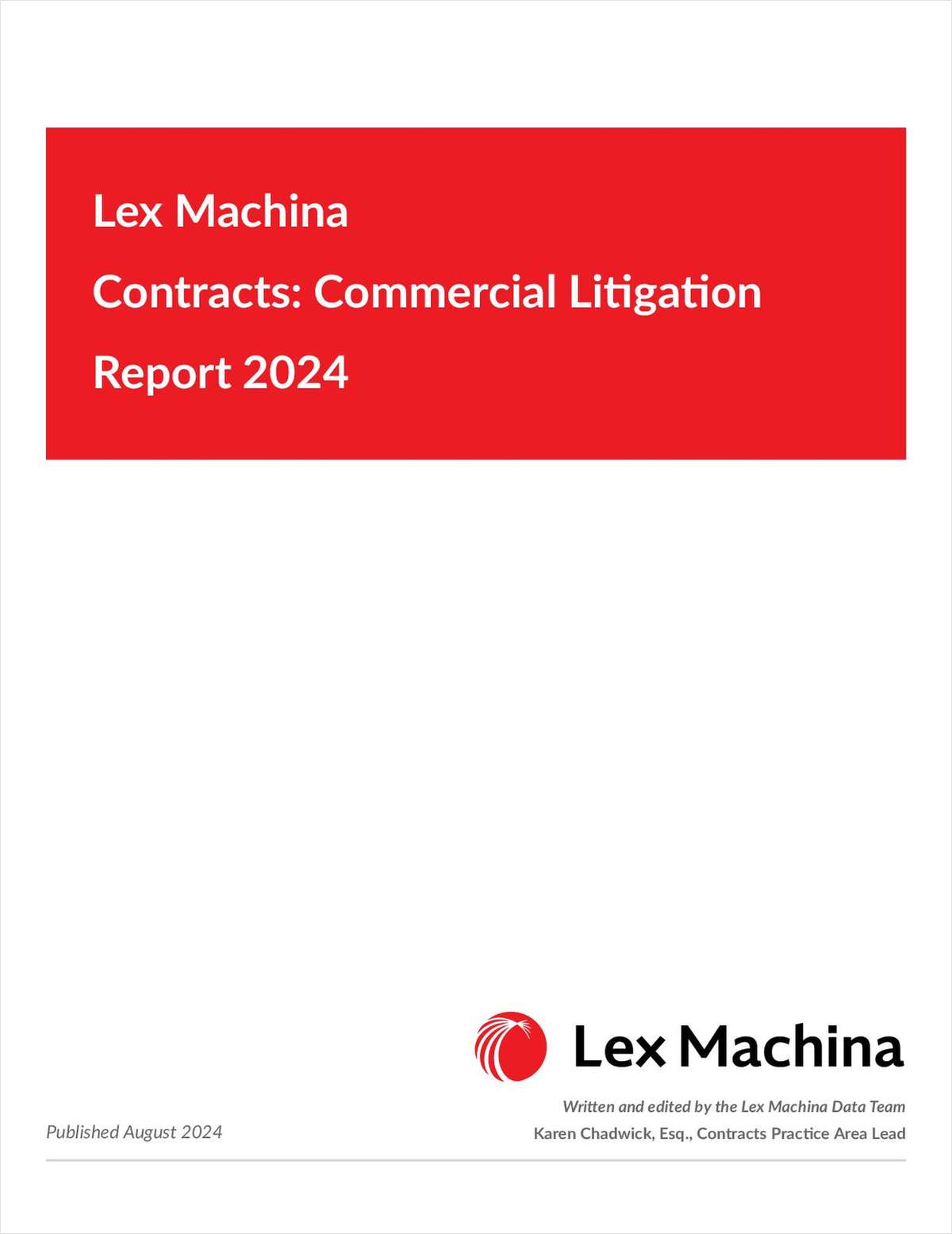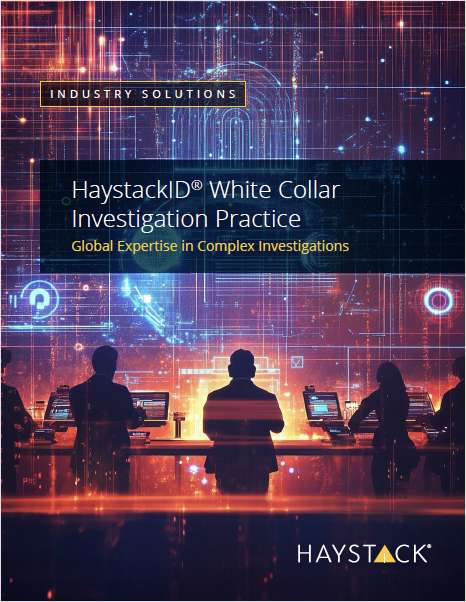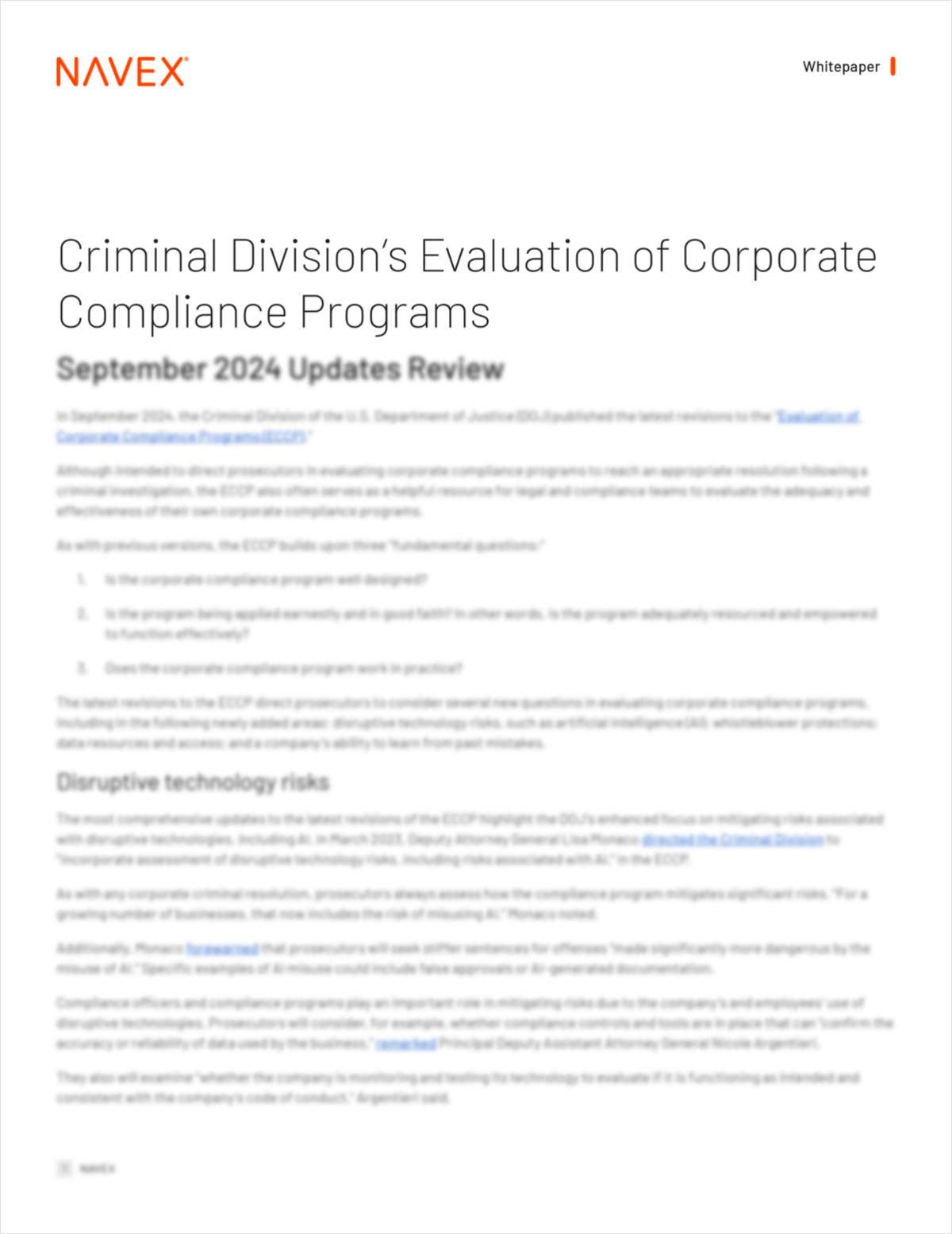Patenting Diagnostic Tests: Can We Expect Changes?
This article discusses the jurisprudence applied to determining patent eligibility of claims for diagnostic methods, and the expectation for changes in analysis of patent eligibility under §101 in the near future.
January 13, 2020 at 03:26 PM
12 minute read
This article appeared in The Intellectual Property Strategist, an ALM/Law Journal Newsletters publication that provides a practical source of both business and litigation tactics in the fast-changing area of intellectual property law, including litigating IP rights, patent damages, venue and infringement issues, inter partes review, trademarks on social media – and more.
Since the Supreme Court's landmark decision in Mayo Collaborative Services et al. v. Prometheus Laboratories, Inc., 566 U.S. 66 (2012), the lower courts have repeatedly found patent claims for medical diagnostic methods to be ineligible for patenting under 35 U.S.C §101. In Mayo, the Supreme Court held that a claim for correlating levels of a drug metabolite in a patient's blood to drug efficacy was not patent eligible under §101, because the claim at issue merely recited a law of nature — one of the judicial exceptions to patent eligible subject matter under §101.
In a recent denial for en banc rehearing, the U.S. Court of Appeals for the Federal Circuit (CAFC) sent out a cry for help — welcoming clarification of patent eligibility standards for diagnostic claims from the Supreme Court or Congress. Athena Diagnostics, Inc. v. Mayo Collaborative Servs., LLC, 927 F.3d 1333 (Fed. Cir. 2019). While a petition for a writ of certiorari is pending for Athena, a bipartisan group of U.S. senators and representatives have formulated a draft bill revising §101.
This article discusses the jurisprudence applied to determining patent eligibility of claims for diagnostic methods, and the expectation for changes in analysis of patent eligibility under §101 in the near future.
|Innovation in Diagnostic Medicine at Risk
The current difficulty in obtaining patent protection for diagnostic methods inventions may have a profound effect on biomedical innovation and development. Such methods have significant value in medicine because they provide information on a patient's heath, options for disease treatment, and the likelihood of disease progression. Because diagnostic tests are very costly to develop — average cost in the U.S. is $50 to $75 million (Diaceutics, (2013)) — patent protection is necessary to incentivize the biomedical industry to invest in developing these methodologies. A failure to incentivize the development of medical diagnostic tests could result in significant costs in human heath, lives, and medical care. Indeed, the CAFC notes that "the public interest is poorly served by adding disincentive to the development of new diagnostic methods." Athena Diagnostics, Inc. v. Mayo Collaborative Servs., LLC, 915 F.3d 743, 762 (Fed. Cir. 2019), reh'g en banc denied, 927 F.3d 1333 (2019), petition for cert. filed (U.S. Oct. 1, 2019) (No. 19-430). Despite the high cost of developing these diagnostic tests and the significance of these potentially life-saving inventions, the CAFC has repeatedly found claims for diagnostic methods to be invalid as patent-ineligible subject matter under §101.
|Diagnostic Patents: Scope of Patent Eligibility Is Narrow
Under §101, "[w]hoever invents or discovers any new and useful process, machine, manufacture, or composition of matter, or any new and useful improvement thereof, may obtain a patent therefor …." Nonetheless, laws of nature, natural phenomena, and abstract ideas are long-held judicially-created exceptions to patentable subject matter.
In the 2012 Mayo case, the Supreme Court found the correlation between the concentration of a thiopurine drug's metabolite in the patient's blood with the drug's efficacy to be a "law of nature" and, therefore, not patentable — even though the correlation could be used to determine the effective drug dose to treat that patient's disease. Mayo at 74-75, 77. Because the claim recited conventional techniques well-known by medical practitioners, there was no "inventive concept" that might have transformed the "law of nature" into a patent-eligible invention. Id. at 79. This two-step analysis, called the Mayo/Alice test because it was applied in Alice Corp. Pty, Ltd. v. CLS Bank Int'l, 573 U.S. 208 (2014) to find a business method patent ineligible, asks: 1) Is the claim directed to one of the judicial exceptions to patent eligible subject matter?; and 2) Does the claim add an "inventive concept" — an element or combination of elements "sufficient to ensure that the patent in practice amounts to significantly more" than the ineligible concept? Claim limitations that are well-known, routine, or conventional do not provide an "inventive concept." Id.
Subsequently, the CAFC has repeatedly affirmed district court applications of the Mayo/Alice test holding claims for diagnostic methods invalid as patent ineligible subject matter. In Ariosa Diagnostics, Inc. v. Sequenom, Inc., 809 F.3d 1282 (Fed. Cir. 2015), cert. denied 788 F.3d 1371 (2016), the CAFC affirmed the district court holding that methods of detecting paternally-inherited cell-free fetal DNA in maternal plasma was not patent eligible. Id. at 1378. The CAFC found this innovative method of fetal genetic testing to be nothing more than a discovery of a natural phenomenon — the presence of fetal DNA in the mother's bloodstream. The methodological techniques recited in the claim were well-understood, routine and conventional and, therefore, did not add any "inventive concept." In his concurring opinion, J. Linn stated:
In my view, the breadth of the second part of the test was unnecessary to the decision reached in Mayo. This case represents the consequence — perhaps unintended — of that broad language in excluding a meritorious invention from the patent protection it deserves and should have been entitled to retain.
Id. at 1380.
The claims at issue in Cleveland Clinic Found. v. True Health Diagnostics LLC, 859 F.3d 1352 (Fed. Cir. 2017), cert. denied, 138 S. Ct. (2018) (Cleveland Clinic I) and Cleveland Clinic Found. v. True Health Diagnostics LLC, 760 Fed. Appx. 1013 (Fed. Cir. 2019) (Cleveland Clinic II) were directed to correlating blood levels of myeoloperoxidase (MPO) to risk of cardiovascular disease. The CAFC found the claims were directed to a law of nature and recited the well-known technique of enzyme-linked immunosorbent assay to measure the MPO levels. Cleveland Clinic I at 1361-62; Cleveland Clinic II at 1018-19.
Similarly, in Roche Molecular Systs., Inc. v. Cepheid, 905 F.3d 1363 (Fed. Cir. 2018), the CAFC found patent-ineligible claims for detecting drug resistant variants of the tuberculosis-causing bacteria using techniques that were well-known and routine in the art. The method relied on naturally-occurring nucleotide sequences and did not contain an inventive concept. Id. at 1372.
In contrast, in Vanda Pharms. Inc. v. West-Ward Pharm. Int'l Ltd., 887 F.3d 1117 (Fed. Cir. 2018), petition for cert. filed, (U.S. Dec. 27, 2018) (No.18-817), the CAFC found patent-eligible claims correlating a patient's genotype for iloperidone metabolism with risk of cardiac complications because the claims recited application of the correlation to a specific method of treatment. Considering the claims as a whole in step 1 of the Mayo/Alice test, they were "directed to a specific method of treatment" and not a law of nature. Id. at 1136. Therefore step 2 of the Mayo/Alice test, to determine whether the treatment steps were well-known, routine or conventional, was not necessary. The Vanda decision illustrates how clever drafting could convert a patent-ineligible claim for a diagnostic method into a patent-eligible claim directed to a treatment method. Nonetheless, method of treatment claims may be difficult to enforce because of the protection from infringement liability for medical practitioners under 35 U.S.C. §287(c) and the savvy of diagnostic kit manufacturers that do not treat or direct treatment of disease, thereby avoiding contributary or induced infringement.
|Athena v. Mayo: Petition for Writ of Certiorari Provides Hope
In Athena, the claims at issue were directed to diagnosing myasthenia gravis (MG) by detecting anti-MuSK antibodies in body fluids using immunoprecipitation. The CAFC affirmed the district court finding that the claims were directed to a law of nature — some patients with MG had anti-muscle-specific tyrosine kinase (anti-MuSK) antibodies. Id. at 750. In addressing step 2 of the Mayo test, the court found that the techniques used to detect anti-MuSK antibodies were "standard techniques in the art." Id. at 751.
In denying the request for en banc hearing, the CAFC justices seemed to agree that diagnostic tests should be patent eligible, but they were bound to follow Supreme Court precedent elucidated in Mayo. Athena Diagnostics, Inc. v. Mayo Collaborative Servs., 927 F.3d 1333 (2019). J. Lourie expressed: "If I could write on a clean slate, I would write as an exception to patent eligibility, as respects natural laws, only claims directed to the natural law itself …. I would not exclude uses or detection of natural laws." Id. at 1335 (Lourie, J., joined by Reyna, J. and Chen, J., concurring in denial of reh'g en banc). J. Hughes explained: "[T]he bottom line for diagnostics patents is problematic. … As an inferior appellate court, we are bound by the Supreme Court." Id. at 1337 (Hughes, J. joined by Prost, J. and Taranto, J., concurring in denial of reh'g en banc). J. Chen agreed that "New methods for diagnosing medical conditions, as a general matter, intuitively seem to be the kind of subject matter the patent system is designed for: to encourage the risky, expensive, unpredictable technical research and development that people would not otherwise pursue in the hope that if they discover something of great medical value, then they will be protected and rewarded for that successful effort with a patent." Id. at 1352 (J. Chen, concurring in denial of reh'g en banc). J. Moore stated that: "When there are specific advances, discoveries or inventions in the diagnostics industry, they must be eligible for patent protection." Id. at 1357 (Moore, J. joined by O'Malley, J., Wallach, J., and Stoll, J., dissenting from denial of reh'g en banc). All twelve CAFC justices suggested that the problem of patent ineligibility of diagnostic patents needed to be addressed by the Supreme Court or by Congress.
In October, Athena Diagnostics petitioned the Supreme Court for a writ of certiorari, stating that "[t]he collective and consistent cry for help from the Federal Circuit, culminating in this case, is extraordinary and emphasizes just how critical this court's guidance is." Petition for Writ of Certiorari at 16, Athena Diagnostics, Inc. v. Mayo Collaborative Servs., LLC (filed Oct. 1, 2019) (No. 19-430). As of now, 11 separate amicus briefs in support of Athena were filed — four from intellectual property or patent law associations, one from Intellectual Property Owners Association, one from professors of law, four from biotechnological, pharmaceutical or medical disease associations, and one from retired CAFC Chief Justice Paul Michel. Moreover, in his invited amicus brief filed in the Hikma Pharms. v. Vanda Pharms. case, U.S. Solicitor General Noel J. Francisco and his team of U.S. Department of Justice and U.S. Patent and Trademark Office attorneys urged the Supreme Court to provide additional guidance in a case, such as Athena, where "Mayo has had particularly significant practical effects with respect to diagnostic methods." Brief for the United States as Amicus Curiae at 22, Hikma Pharms. v. Vanda Pharms. (U.S. Dec. 2019) (No. 18-817). Solicitor Gen. Francisco stated that "[t]he potential for rote application of the Mayo two-step framework to call into question such bedrock understandings of the patent system, in a way that the Mayo court clearly did not envision, suggests that the Mayo framework warrants reconsideration." Id. at 14.
|Legislation
CAFC justices also called for Congress to act in clarifying §101 eligibility. J. Lourie expressed: "As long as the Court's precedent stands, the only possible solution lies in the pens of claim drafters or legislators." Athena Diagnostics, Inc. v. Mayo Collaborative Servs., LLC, 927 F.3d 1333, 1336 (Fed. Cir. 2019) (Lourie, J., joined by Reyna, J. and Chen, J., concurring in denial of reh'g en banc). J. Hughes stated: "I, for one, would welcome further explication of eligibility standards in the area of diagnostics patents. … Such an explication … might come from Congress, with its distinctive role in making the factual and policy determinations relevant to setting the proper balance of innovation incentives under patent law." Id. at 1337 (Hughes, J. joined by Prost, J. and Taranto, J., concurring in denial of reh'g en banc). J. O'Malley expressed: "The Supreme Court has instructed federal courts to read into Section 101 an 'inventive concept' requirement — a baffling standard that Congress removed when it amended the Patent Act in 1952. I encourage Congress to amend the Patent Act once more to clarify that it meant what it said in 1952." Id. at 1370 (Fed. Cir. 2019 (O'Malley, J. dissenting in denial of reh'g en banc).
In May, a bicameral, bipartisan group from Congress, initiated by Senators Coon (D-DE) and Tillis (R-NC) released a draft bill to reform §101 of the Patent Act. Among the changes, the draft bill requires considering the claim as a whole, eliminates judicial exceptions, strikes the word "new" from the phrase "new and useful" because novelty is a requirement under section 102 of the Patent Act, and eliminates consideration of whether individual limitations of the claim are well-known, routine or conventional. One effect of this draft bill would be that claims to diagnostic methods would be patent eligible. This bill has already been the subject of hearing before the Intellectual Property Sub-Committee of the Senate Judiciary Committee.
|Analysis
Considering the process of revising and passing a bill into law, and the other issues before Congress, it may be some time before we see a legislative revision of patent eligibility under Section 101. Hopefully, the Supreme Court will hear the call from the CAFC, the Solicitor General, industry and law organizations, and address the issue of patentability of diagnostic methods claims in the Athena case.
*****
Leslie Kushner is Counsel in the Litigation Group at Pearl Cohen Zedek Latzer Baratz's New York office. She is an experienced intellectual property attorney, with extensive background in life sciences, biotechnology, and biochemistry. She can be reached at [email protected].
This content has been archived. It is available through our partners, LexisNexis® and Bloomberg Law.
To view this content, please continue to their sites.
Not a Lexis Subscriber?
Subscribe Now
Not a Bloomberg Law Subscriber?
Subscribe Now
NOT FOR REPRINT
© 2024 ALM Global, LLC, All Rights Reserved. Request academic re-use from www.copyright.com. All other uses, submit a request to [email protected]. For more information visit Asset & Logo Licensing.
You Might Like
View All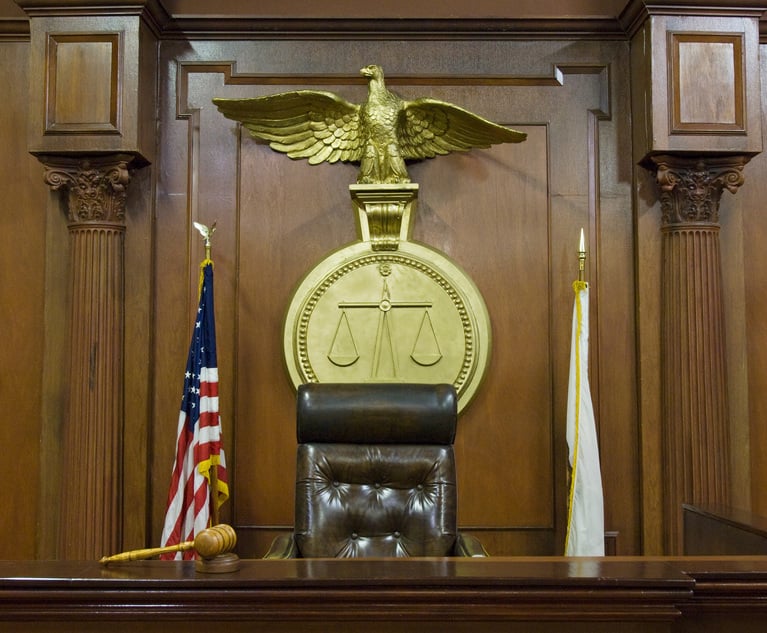
Democratic State AGs Revel in Role as Last Line of Defense Against Trump Agenda
7 minute read
Big Law Communications, Media Attorneys Brace for Changes Under Trump
4 minute read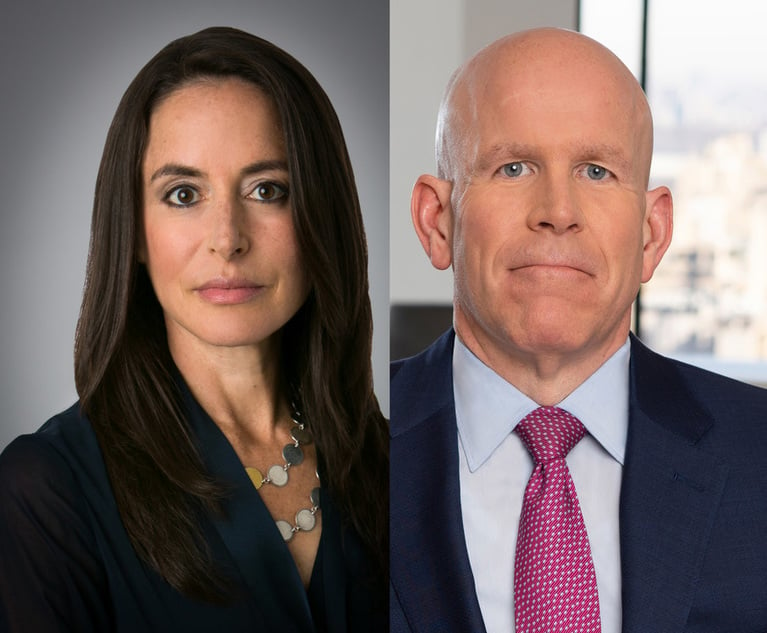

Will Trump Be a Boost to Quinn Emanuel's Fortunes in China?
Trending Stories
- 1Revenue Up at Homegrown Texas Firms Through Q3, Though Demand Slipped Slightly
- 2Warner Bros. Accused of Misleading Investors on NBA Talks
- 3FTC Settles With Security Firm Over AI Claims Under Agency's Compliance Program
- 4'Water Cooler Discussions': US Judge Questions DOJ Request in Google Search Case
- 5Court rejects request to sideline San Jose State volleyball player on grounds she’s transgender
Who Got The Work
Michael G. Bongiorno, Andrew Scott Dulberg and Elizabeth E. Driscoll from Wilmer Cutler Pickering Hale and Dorr have stepped in to represent Symbotic Inc., an A.I.-enabled technology platform that focuses on increasing supply chain efficiency, and other defendants in a pending shareholder derivative lawsuit. The case, filed Oct. 2 in Massachusetts District Court by the Brown Law Firm on behalf of Stephen Austen, accuses certain officers and directors of misleading investors in regard to Symbotic's potential for margin growth by failing to disclose that the company was not equipped to timely deploy its systems or manage expenses through project delays. The case, assigned to U.S. District Judge Nathaniel M. Gorton, is 1:24-cv-12522, Austen v. Cohen et al.
Who Got The Work
Edmund Polubinski and Marie Killmond of Davis Polk & Wardwell have entered appearances for data platform software development company MongoDB and other defendants in a pending shareholder derivative lawsuit. The action, filed Oct. 7 in New York Southern District Court by the Brown Law Firm, accuses the company's directors and/or officers of falsely expressing confidence in the company’s restructuring of its sales incentive plan and downplaying the severity of decreases in its upfront commitments. The case is 1:24-cv-07594, Roy v. Ittycheria et al.
Who Got The Work
Amy O. Bruchs and Kurt F. Ellison of Michael Best & Friedrich have entered appearances for Epic Systems Corp. in a pending employment discrimination lawsuit. The suit was filed Sept. 7 in Wisconsin Western District Court by Levine Eisberner LLC and Siri & Glimstad on behalf of a project manager who claims that he was wrongfully terminated after applying for a religious exemption to the defendant's COVID-19 vaccine mandate. The case, assigned to U.S. Magistrate Judge Anita Marie Boor, is 3:24-cv-00630, Secker, Nathan v. Epic Systems Corporation.
Who Got The Work
David X. Sullivan, Thomas J. Finn and Gregory A. Hall from McCarter & English have entered appearances for Sunrun Installation Services in a pending civil rights lawsuit. The complaint was filed Sept. 4 in Connecticut District Court by attorney Robert M. Berke on behalf of former employee George Edward Steins, who was arrested and charged with employing an unregistered home improvement salesperson. The complaint alleges that had Sunrun informed the Connecticut Department of Consumer Protection that the plaintiff's employment had ended in 2017 and that he no longer held Sunrun's home improvement contractor license, he would not have been hit with charges, which were dismissed in May 2024. The case, assigned to U.S. District Judge Jeffrey A. Meyer, is 3:24-cv-01423, Steins v. Sunrun, Inc. et al.
Who Got The Work
Greenberg Traurig shareholder Joshua L. Raskin has entered an appearance for boohoo.com UK Ltd. in a pending patent infringement lawsuit. The suit, filed Sept. 3 in Texas Eastern District Court by Rozier Hardt McDonough on behalf of Alto Dynamics, asserts five patents related to an online shopping platform. The case, assigned to U.S. District Judge Rodney Gilstrap, is 2:24-cv-00719, Alto Dynamics, LLC v. boohoo.com UK Limited.
Featured Firms
Law Offices of Gary Martin Hays & Associates, P.C.
(470) 294-1674
Law Offices of Mark E. Salomone
(857) 444-6468
Smith & Hassler
(713) 739-1250






